
Dewey+Decimal+System+Chart Dewey decimal system, Library skills, Decimal practice
The Dewey Decimal Classification ( DDC ), colloquially known as the Dewey Decimal System, is a proprietary library classification system which allows new books to be added to a library in their appropriate location based on subject. [Note 1] It was first published in the United States by Melvil Dewey in 1876. [1]

Library Dewey Decimal System Flowers Pinterest Dewey decimal classification, Chart and School
The Dewey Decimal system and the Library of Congress system, mentioned below, are the classification schemes most frequently used in North American libraries. The Universal Decimal system The Universal Decimal Classification, published in 1905 and preferred by scientific and technical libraries, was an immediate offspring of the Dewey system.
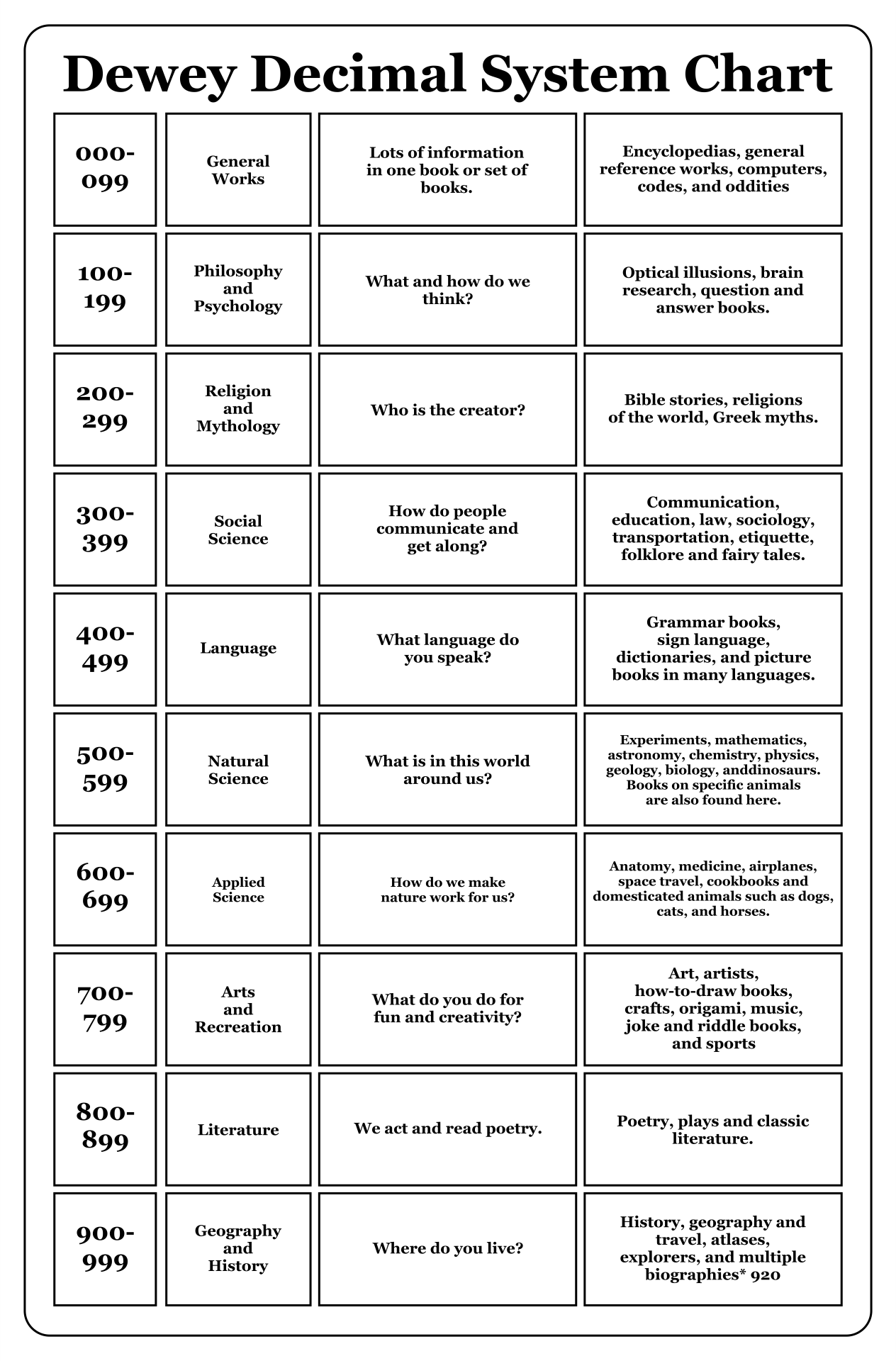
10 Best Dewey Classification Signs Free Printable
Melville Dewey created the Dewey Decimal Classification System (DDC) to help library users find books. Under this system, every book is assigned a call number. The call number is like the book's address and is placed on the book's spine. The call number has two components, the DDC number and the Cutter number.

Dewey Days Dewey decimal classification, Dewey decimal system, Library classification
The Dewey Decimal Classification (DDC) system is a general knowledge organization tool that is continuously revised to keep pace with knowledge. The system was conceived by Melvil Dewey in 1873 and first published in 1876.

Listen Research Assistance LibGuides at New St. Andrews College
Dewey Decimal Classification, system for organizing the contents of a library based on the division of all knowledge into 10 groups, with each group assigned 100 numbers.

Dewey Decimal System Chart Charles Reed Learning Center decimal decimal kids
The Dewey Decimal System is also called Dewey Decimal Classification, Dewey, and DDC. Dewey Decimal Classification was created in 1876 by Melvil Dewey. Before the DDC was invented, libraries had items on the shelf in the order they were acquired, which could make it difficult to fine what you were looking for. Dewey Decimal Classification.

68 best images about Dewey Decimal on Pinterest Dewey decimal signs, Student and Library lessons
Dewey Decimal Classification Chart 000 - Computer Science, Information, and General Works 000 Computer science, knowledge & systems 010 Bibliographies 020 Library & information sciences 030 Encyclopedias & books of facts 040 [Unassigned] 050 Magazines, journals & serials 060 Associations, organizations & museums.

dewey decimal system card Library Dewey & related Pinterest Library ideas, Dewey
Books Featured GeekMom. April 16, 2015 Jackie Reeve 5. Photo by Jackie Reeve. My favorite dorky librarian joke is that I was absent the day they taught the Dewey Decimal System in library school. This is 100% true. As part of my Masters in Library and Information Science, I had to take a class in cataloging. It covered all the different systems.

8 Best Images of Printable Dewey Decimal System Posters For Free Dewey Decimal Classification
The Dewey Decimal Classification (DDC) is structured around ten main classes covering the entire world of knowledge; each main class is further structured into ten hierarchical divisions, each having ten divisions of increasing specificity. [1]

The Dewey Decimal System Learn About Your Library
Search Standard Number Jump Right In. ISBN (International Standard Book Number) ISSN (International Standard Serial Number) UPC (Universal Product Code). Classify is an OCLC Research prototype that helps you classify books, magazines, movies, and music using the Dewey Decimal Classification system or the Library of Congress Classification system.
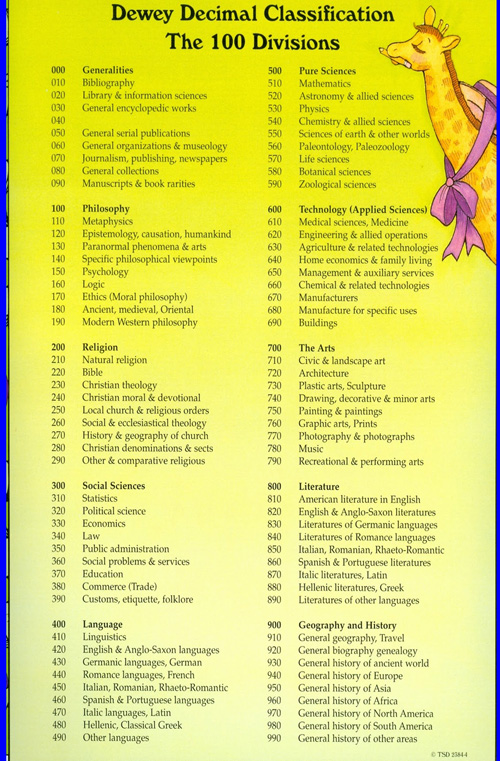
Dewey Decimal System Chart Charles Reed Learning Center
Dewey Decimal Guide Use this chart to learn how the library's books are organized on the shelves! Look at the number next to the subject you are interested in below (for example, 560 for Dinosaurs), then find that number on the library's shelves to find those books. 000 General Knowledge 000 Computers 001 UFOs and the Unexplained 030

dewey decimal system chart Dewey Decimal Classification by the 100s Edublogs School
The Dewey Decimal Classification (DDC) system, devised by library pioneer Melvil Dewey in 1873 and first published in 1876, and owned by OCLC since 1988, provides a dynamic structure for the organization of library collections. It follows Dewey's division of knowledge into ten broad categories, which in turn are further divided into ten sections.
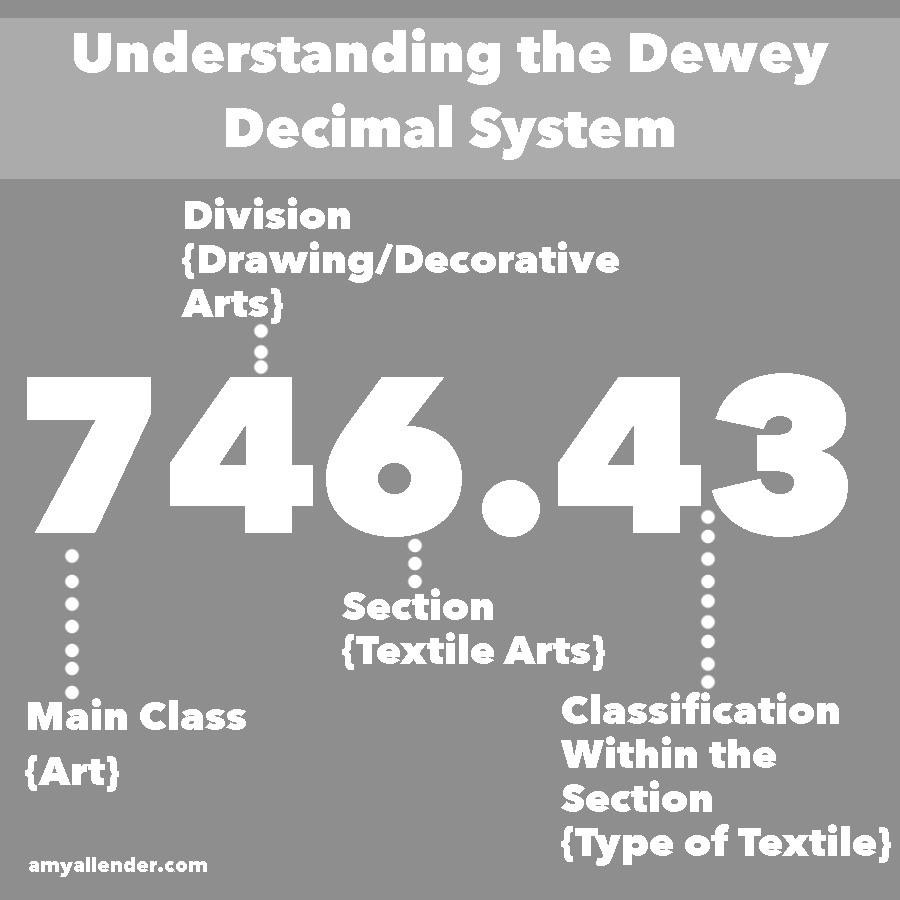
Mr. Dewey amy allender {dot} com
Dewey Decimal Classification System; Commonly Used Numbers; Search this Guide Search. Dewey Decimal Classification System. includes tips using geography. Home; Tips Using Geography.. Commonly Used Numbers; Expanded List of Commonly Used Numbers (400's, 700's, 800's) Converting Dewey to LC; A story of the numbers; Other Resources; Using the.
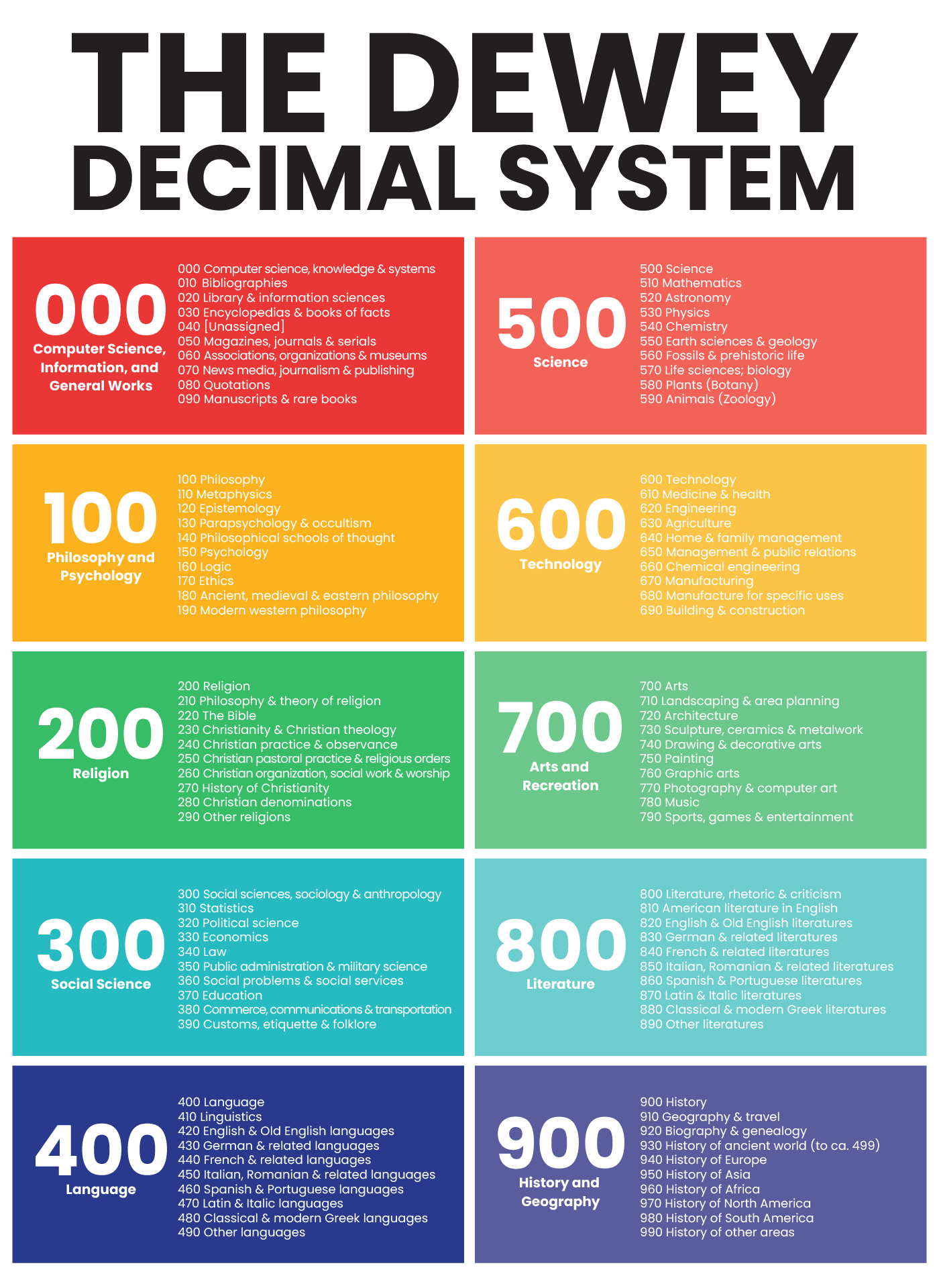
10 Best Printable Dewey Decimal System Posters For Free PDF for Free at Printablee
Dewey Decimal Numbers @Your Library Smithfield Library The aim of this guide is to assist you in your search for knowedge and information at Cairns Libraries. The guide may be used as you browse our library shelves for your chosen topic or to assist you once you have searched the library catalogue and are ready to look for items on the shelves.
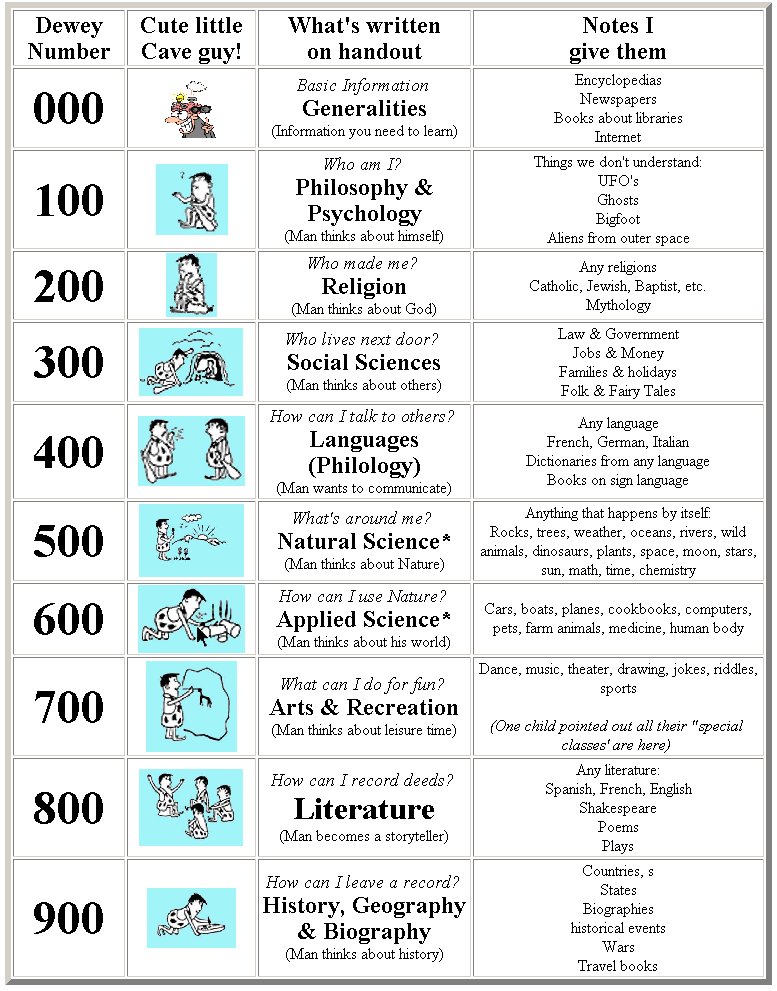
FEU DILIMAN BASIC EDUCATION LIBRARY Dewey Decimal Classification System
Many public libraries and some other library systems use Dewey Decimal numbers to classify or arrange books and other items in their collections. This call number is like an address which identifies the shelf location of the item. The PCC Library traditionally has arranged its collections using the Dewey system, but is now transitioning to the Library of Congress System.
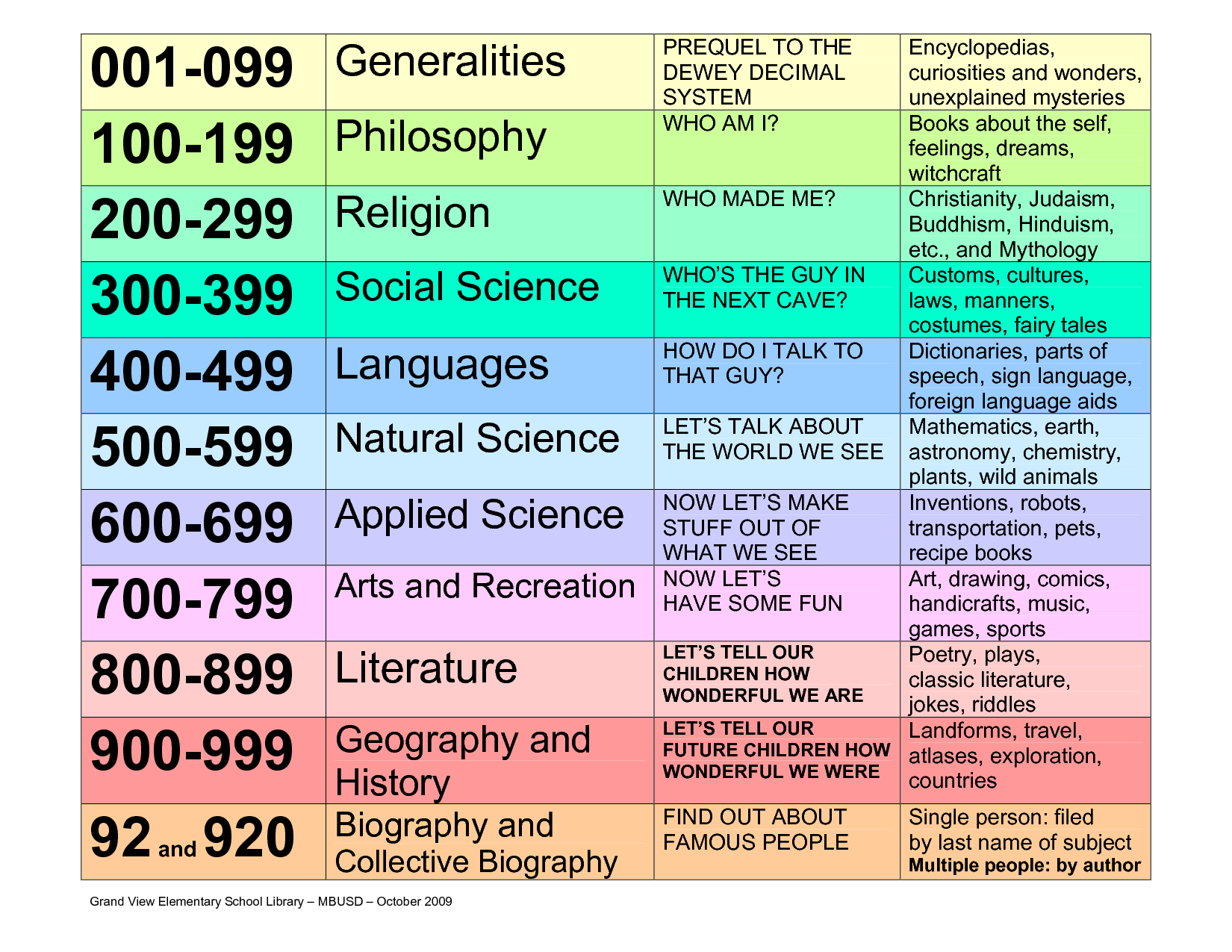
Dewey Decimal System PNG Transparent Dewey Decimal System.PNG Images. PlusPNG
The Dewey Decimal Classification (DDC) system is a general knowledge organization tool that is continuously revised to keep pace with knowledge. The system was conceived by Melvil Dewey in 1873 and first published in 1876.